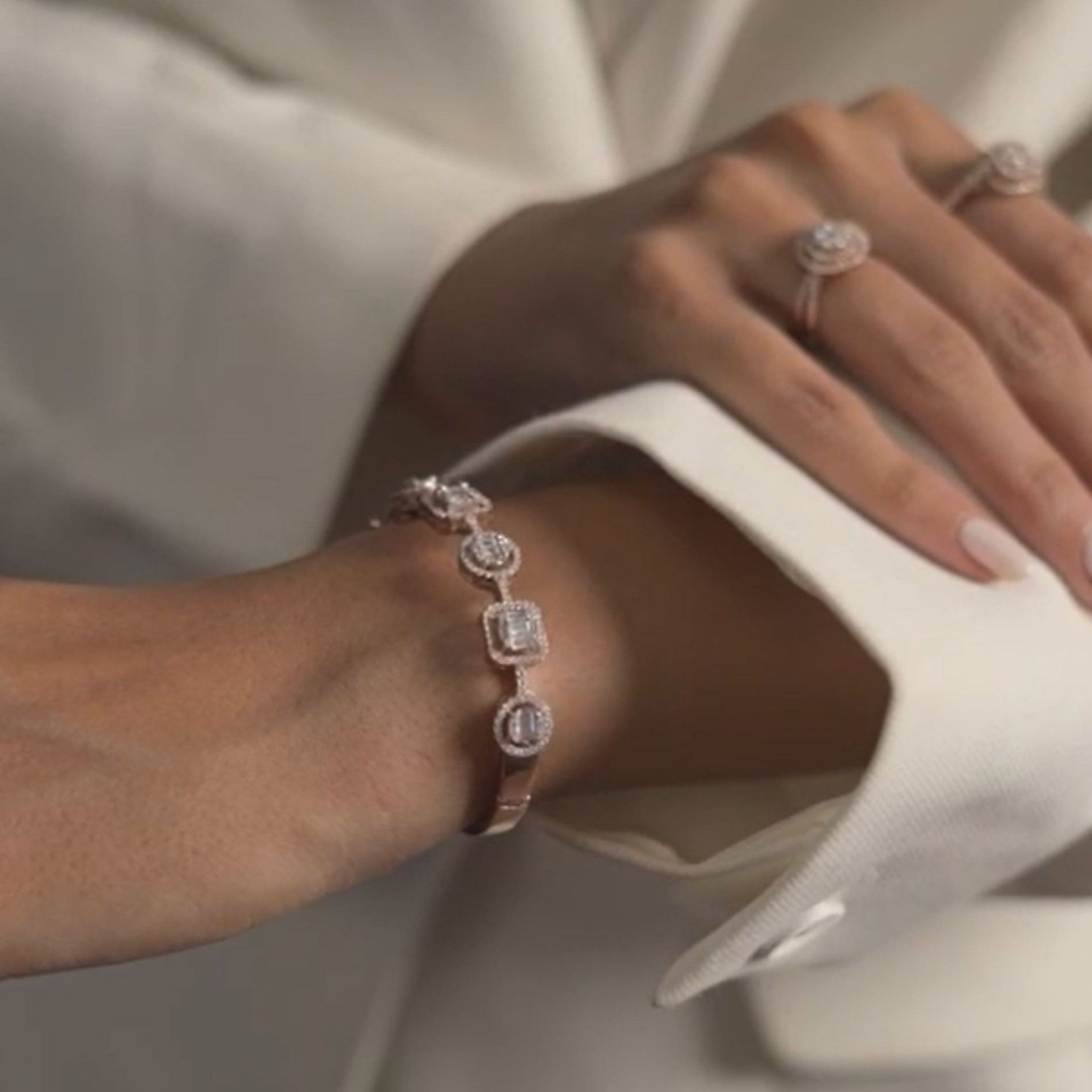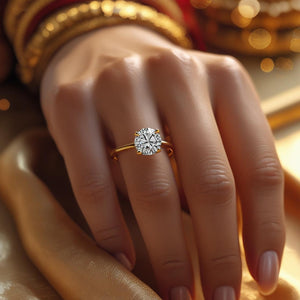Diamonds are revered not just for their beauty, but also for the precision and care with which they are evaluated. For anyone buying a diamond—whether an engagement ring, a special gift, or a personal investment—the 4Cs framework offers clarity and confidence. Developed by the Gemological Institute of America (GIA), the 4Cs—Cut, Color, Clarity, and Carat—are the universal language for comparing diamond quality, empowering shoppers with transparent criteria for smart, informed choices.
Why the 4Cs Matter in Diamond Buying
Understanding the 4Cs isn’t just for gemologists. For buyers, these four factors together shape a diamond’s appearance, durability, rarity, and price. The 4Cs framework removes guesswork, making it possible to compare diamonds side-by-side—whether you’re buying online or in person. Knowing what each “C” measures helps align your purchase to both your taste and budget, ensuring you get the best value and brilliance for your investment.
What Are the 4Cs of Diamonds? Quick Overview
Here’s what each “C” stands for:
-
Cut: How well the diamond is shaped and faceted, affecting brilliance and sparkle.
-
Color: The degree of colorlessness in a white diamond, graded from D (colorless) to Z (light yellow or brown).
-
Clarity: The presence (or absence) of tiny natural imperfections, known as inclusions or blemishes.
-
Carat: The diamond’s actual weight, not its physical size—measured in metric carats (1 carat = 200mg).
Diamond Cut: Sparkle, Shape & Precision
Cut is the most crucial of the 4Cs. It determines how a diamond interacts with light—its brightness (brilliance), fire (color flashes), and scintillation (sparkle as it moves). A well-cut diamond returns nearly all light that enters, while a poorly cut stone lets light leak out, appearing dull.
Cut Quality Chart (GIA/IGI Scale)
|
Grade |
Description |
|
Excellent / Ideal |
Maximum brilliance and fire; most valuable |
|
Very Good |
Bright, lively, minimal darkness |
|
Good |
Still sparkly, may allow minor light leakage |
|
Fair |
Noticeable darkness or dullness |
|
Poor |
Significant loss of brilliance and sparkle |
Factors affecting cut: proportions, symmetry, and polish—all crafted by skilled cutters who maximize sparkle for each diamond shape.
Diamond Color: Grading from D to Z
Diamond color is graded from D (colorless) to Z (light yellow or brown). The less color, the higher the value. Color is subtle—even a single grade can mean a significant price difference. Most consumers prefer the “near colorless” range (G–J), as these diamonds appear white to most eyes but offer better value than the rare, premium-priced D–F stones.
|
Grade |
Description |
|
D–F |
Colorless |
|
G–J |
Near Colorless |
|
K–M |
Faint Tint |
|
N–R |
Very Light |
|
S–Z |
Light Color |
Note: Fancy colored diamonds (e.g., blue, pink, yellow) have a different scale based on the intensity and hue of color.
Diamond Clarity: Understanding Inclusions
Clarity refers to the absence of natural imperfections, both internal (inclusions) and external (blemishes). Diamonds are graded under 10x magnification on a scale from Flawless (FL) to Included (I1–I3), but most imperfections are microscopic and invisible to the naked eye. "Eye-clean" diamonds (often VS2–SI1) present the best value—they look perfect without the cost premium attached to FL or IF stones.
Clarity Grading Scale
|
Grade |
Description |
|
FL |
Flawless—no inclusions/blemishes |
|
IF |
Internally flawless |
|
VVS1/2 |
Very, very slightly included |
|
VS1/2 |
Very slightly included |
|
SI1/2 |
Slightly included |
|
I1–I3 |
Included (visible imperfections) |
Diamond Carat: Size, Weight & Value
Carat measures a diamond's weight, not its physical size—1 carat equals 0.2 grams. Large diamonds are rare; price rises dramatically with carat weight. But size alone shouldn’t drive your decision: a well-cut 0.90ct can appear larger and more brilliant than a poorly cut 1.00ct. Balancing carat with cut, color, and clarity offers the best value.
Putting the 4Cs Together: How to Prioritize
Every shopper has unique priorities. Consider:
-
Want the most brilliance? Prioritize Cut.
-
Want a larger-looking diamond? Balance carat and cut.
-
On a budget? Choose “eye-clean” clarity and near-colorless color (like H–J, VS2–SI1) to maximize size and sparkle.
-
Maximize carat or go for "ideal" grades? The right balance depends on the look you want and your budget.
There’s no single “right” combination—find the 4Cs mix that best suits your style and budget.
4Cs Chart & Comparison Table
|
4C |
Grading Range |
Quick Value Guidance |
|
Cut |
Excellent–Poor |
Prioritize for sparkle |
|
Color |
D–Z (colorless to light) |
H–J offers best value |
|
Clarity |
FL–I3 (no flaws to visible) |
VS2–SI1 usually “eye-clean” |
|
Carat |
Any size |
Price surges with size increase |
Why Certification (GIA, IGI, AGS) Matters
Trusted laboratories like GIA, IGI, and AGS independently verify every diamond’s 4Cs, giving you confidence in your purchase. Certification ensures that your diamond is ethically sourced, natural (unless disclosed as lab-grown), and described accurately. Always request and review a grading report—your guarantee of transparency and value.
Conclusion
Mastering the 4Cs puts you in control of your diamond purchase. With a little knowledge—and a diamond certificate from a trusted lab—you can weigh sparkle, color, clarity, and size like a pro. For personalized guidance, consult with 3Soul’s diamond experts, who can help you use the 4Cs chart to find the perfect match for your style, budget, and peace of mind.
FAQs
Which C is most important when buying a diamond?
Cut is generally seen as most important for sparkle and beauty. But “importance” depends on personal priorities—some may emphasize carat (size), others color or clarity.
What does color grading D–Z mean?
It’s a scale from D (colorless, highest value) to Z (light yellow or brown, lowest for white diamonds). Near-colorless grades (G–J) usually look white but are better value.
How should I balance the 4 Cs on a budget?
Prioritize an excellent or very good cut, aim for near-colorless color (H–J), “eye-clean” clarity (VS2–SI1), and select the highest carat weight within your budget.
Are lab‑grown diamonds graded using the 4 Cs?
Yes, lab-grown diamonds are graded on the same 4Cs framework; always request certification from reputable labs for both natural and lab-grown gems.
Do fancy-colored diamonds follow the 4 Cs?
Yes—but with special attention to color intensity rather than absence of color. Cut, clarity, and carat still matter for value and appearance.
For further clarity or help with diamond shopping, use the 4Cs chart above and consult directly with a 3Soul diamond expert—because an informed choice is a brilliant one.


